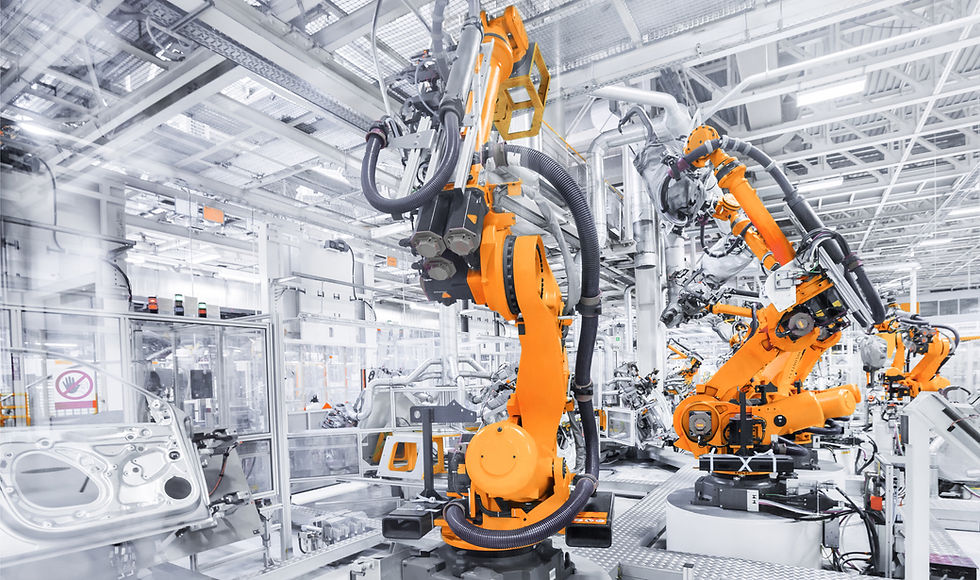- Anton Ruckman

- Apr 22, 2024
- 3 min read
Navigating AI, Virtual Reality, and the Future of Product Design In the ever-evolving landscape of design, the intersection of technology and creativity has given rise to exciting possibilities. With advancements in artificial intelligence (AI) and virtual reality (VR), product designers find themselves at the forefront of innovation. These emerging technologies are not only transforming the way products are designed but also reshaping the role of the designer and paving the way for a future that promises unparalleled creativity and efficiency.

Harnessing the Power of Technology
Gone are the days when product design relied solely on traditional methods. Today, designers have access to many tools and technologies that streamline the design process and open up new avenues for exploration. AI, in particular, has emerged as a game-changer, offering capabilities such as predictive modeling, generative design, and intelligent automation. Generative design, powered by AI algorithms, allows designers to explore countless design iterations based on specified parameters, ultimately leading to optimized solutions that may not have been conceivable through traditional means. By harnessing the power of AI, designers can accelerate the ideation phase, uncovering innovative concepts with unprecedented speed and precision. VR has also revolutionized the way designers visualize and prototype their creations. By immersing themselves in virtual environments, designers can gain a deeper understanding of spatial relationships, ergonomics, and user interactions. VR enables designers to test and refine their designs in a virtual context, minimizing the need for physical prototypes and accelerating the iteration process.

Integrating New Technologies into the Design Process
While the potential of AI and VR in product design is undeniable, implementing these technologies effectively requires careful consideration and strategic planning. Designers must first identify areas within the design process where these technologies can add value and enhance efficiency. One approach is to leverage AI-powered tools and software platforms that seamlessly integrate into existing design workflows. These tools can automate repetitive tasks, analyze data to identify trends and patterns, and generate insights that inform the design process. By embracing AI-driven design solutions, designers can free up time and mental bandwidth to focus on creative problem-solving and innovation. Similarly, VR can be integrated into the design process to facilitate collaborative design reviews and immersive prototyping sessions. Design teams can leverage VR headsets to explore virtual prototypes in real-time, gather feedback from stakeholders, and iterate on designs with greater agility and accuracy. However, amidst the rapid advancement of technology, it's crucial to recognize the enduring value of traditional design skills. The classic education and knowledge of form and factor interpretation through sketching remain essential foundations of the design process. Sketching serves as a fundamental tool for expressing ideas, exploring concepts, and communicating design intent. It fosters creativity, encourages experimentation, and enables designers to iterate quickly and fluidly. Moreover, sketching plays a vital role in providing input information for AI software, facilitating the generation of more accurate and innovative design solutions. In essence, the correlation is clear: the better one's proficiency in sketching, the more refined and insightful the input for AI algorithms, ultimately leading to superior results. As designers continue to embrace the latest technologies, they mustn't overlook the timeless practice of sketching, recognizing its indispensable role in shaping the future of design.

The Role of the Product Designer in the Age of Technology
As technology continues to reshape the design landscape, the role of the product designer is evolving in tandem. While creativity and aesthetic sensibility remain essential qualities, today's designers must also possess a deep understanding of technology and its implications for design practice. Product designers are no longer just creators; they are also facilitators, collaborators, and innovators. They must be proficient in leveraging AI and VR to augment their design process and deliver solutions that meet the evolving needs of users and businesses alike. Furthermore, the future of the profession holds exciting possibilities as designers embrace emerging technologies and expand their skill sets. Designers may find themselves working in interdisciplinary teams alongside engineers, data scientists, and experts in related fields, collaborating to create holistic solutions that blend physical and digital experiences seamlessly.
In conclusion, the era of AI and VR presents unprecedented opportunities for product designers to push the boundaries of creativity and innovation. By harnessing the power of these technologies, designers can streamline the design process, unlock new possibilities, and deliver impactful solutions that shape the way we live, work, and interact with the world around us. As we embrace the future of design, it is essential to remain adaptable, curious, and open to experimentation. By staying at the forefront of technological advancements and embracing a mindset of continuous learning and improvement, designers can position themselves as catalysts for change and leaders in shaping the future of design. In this dynamic and ever-evolving landscape, the possibilities are limitless. It's up to us as designers to seize the opportunity and pave the way for a future where creativity knows no bounds.
Here are some useful links:


Comments